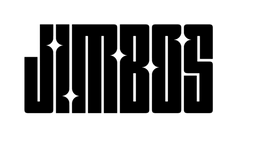Interior Odor Removal: The Real Cause and Fix
If your car still smells bad even after cleaning, you’re not alone. Air fresheners only mask the issue — they don’t fix it. In this guide, you’ll learn how to permanently remove interior odors by identifying their true sources and neutralizing them at the root.
Estimated Reading Time: ~9 minutes
Why Your Car Smells — Even After Cleaning
Odors don’t just sit on surfaces — they live inside fabrics, foam, and HVAC systems. Wiping down the dash won’t solve the issue if the source is embedded deep in your seats or ventilation. To eliminate odors, you must remove contamination and neutralize the odor molecules themselves.
- → Food spills and drinks seep into carpets and foam.
- → Sweat, pets, and smoke bond to seat fibers.
- → Mold and bacteria grow in damp carpets and vents.
Step 1: Identify the Source
Before applying any deodorizer, locate where the smell is coming from. Sit in different parts of the car — front seat, back seat, trunk — to isolate the zone. Common odor sources include:
- → Carpets and underpadding (from spills or leaks)
- → Seats and upholstery (from sweat or smoke)
- → AC vents (from bacteria and moisture buildup)
- → Trunk and spare tire wells (from standing water)
Step 2: Deep Clean the Surfaces
Use Complete Cabin Cleaner on all interior fabrics, carpets, and seats. It breaks down organic residue that causes smells — not just covering them. Spray lightly, agitate with a Scrub Buddy Pad, and blot dry with a clean microfiber towel.
This step removes the contamination that odor molecules cling to, which is essential before deodorizing.
Eliminate Odors at the Source
Complete Cabin Cleaner safely removes organic buildup from seats, carpets, and vents — restoring that clean, neutral scent without masking it.
Shop Complete Cabin Cleaner Buy on AmazonStep 3: Neutralize, Don’t Mask
Once cleaned, apply a true odor neutralizer — not just an air freshener. Neutralizers break down odor molecules at the chemical level. If you’re using an ozone generator or fogger, make sure all surfaces are dry and clean first; otherwise, odors can return quickly.
Pro tip: Always remove the cabin air filter after treatment and replace it — it often holds trapped smells from the vents.
Step 4: Clean the Air Vents
Use Complete Cabin Cleaner and a small brush or detailing swab to clean vent blades and surrounding trim. Follow with compressed air or a vacuum to remove dust. Running the AC on high for 10 minutes afterward helps dry out the system and prevent mold regrowth.
Step 5: Prevent Future Odors
Keeping your car odor-free comes down to regular maintenance. Vacuum weekly, clean spills immediately, and leave windows cracked on hot days to reduce humidity. Avoid using strong fragrances — they can combine with existing smells and make the odor worse.
Common Odor Mistakes (and How to Fix Them)
| Mistake | Result | Correct Approach |
|---|---|---|
| Using air fresheners | Temporary masking, odor returns | Neutralize and remove the source |
| Skipping seat and carpet cleaning | Smells remain embedded | Use Complete Cabin Cleaner and blot dry |
| Ignoring vents | Musty smell when AC runs | Clean vents and replace cabin filter |
| Overusing ozone | Can damage materials and electronics | Use sparingly and ventilate afterward |
Stop Masking — Start Cleaning
Pair Complete Cabin Cleaner with Scrub Buddy Pads to deep clean fabric, vinyl, and vents for true odor elimination that lasts.
Shop Scrub Buddy Pad 3-Pack Buy on AmazonPro Tips for Odor-Free Interiors
- → Always clean before deodorizing — otherwise, the smell will return.
- → Use airflow (open windows, AC) to circulate fresh air after cleaning.
- → Replace old cabin filters every 6–12 months.
- → Avoid strong chemical deodorizers that can damage fabric coatings.
- → Keep silica packs or baking soda in your car to absorb lingering humidity.
Related Reading
- The Ultimate Interior Detailing Guide for Beginners
- How to Clean a Car Headliner Safely
- How to Avoid Water Stains and Mildew on Upholstery
- How to Detail a Family Car Interior (The Real-World Way)
- Why Your Interior Still Feels Dirty After Cleaning
FAQs
Why does my car smell bad even after cleaning?
The source of the odor is likely trapped deep in fabrics, foam, or the AC system. Surface cleaning won’t remove it — you must deep clean and neutralize the source.
What’s the best way to remove smoke smell?
Clean all interior surfaces with Complete Cabin Cleaner, replace the cabin air filter, and run an ozone or ionizer treatment after the interior is dry.
Can I use vinegar or baking soda to remove odors?
They can help, but they’re temporary. Proper enzymatic cleaners or professional odor neutralizers are more effective and safer on materials.
How long does it take to get rid of car smells?
Depending on severity, full removal can take a few hours to a few days. Clean, dry, and ventilate thoroughly for lasting results.
What’s the difference between neutralizing and masking odors?
Masking just hides the smell with fragrance; neutralizing chemically destroys the odor molecules, leaving the interior truly clean.



